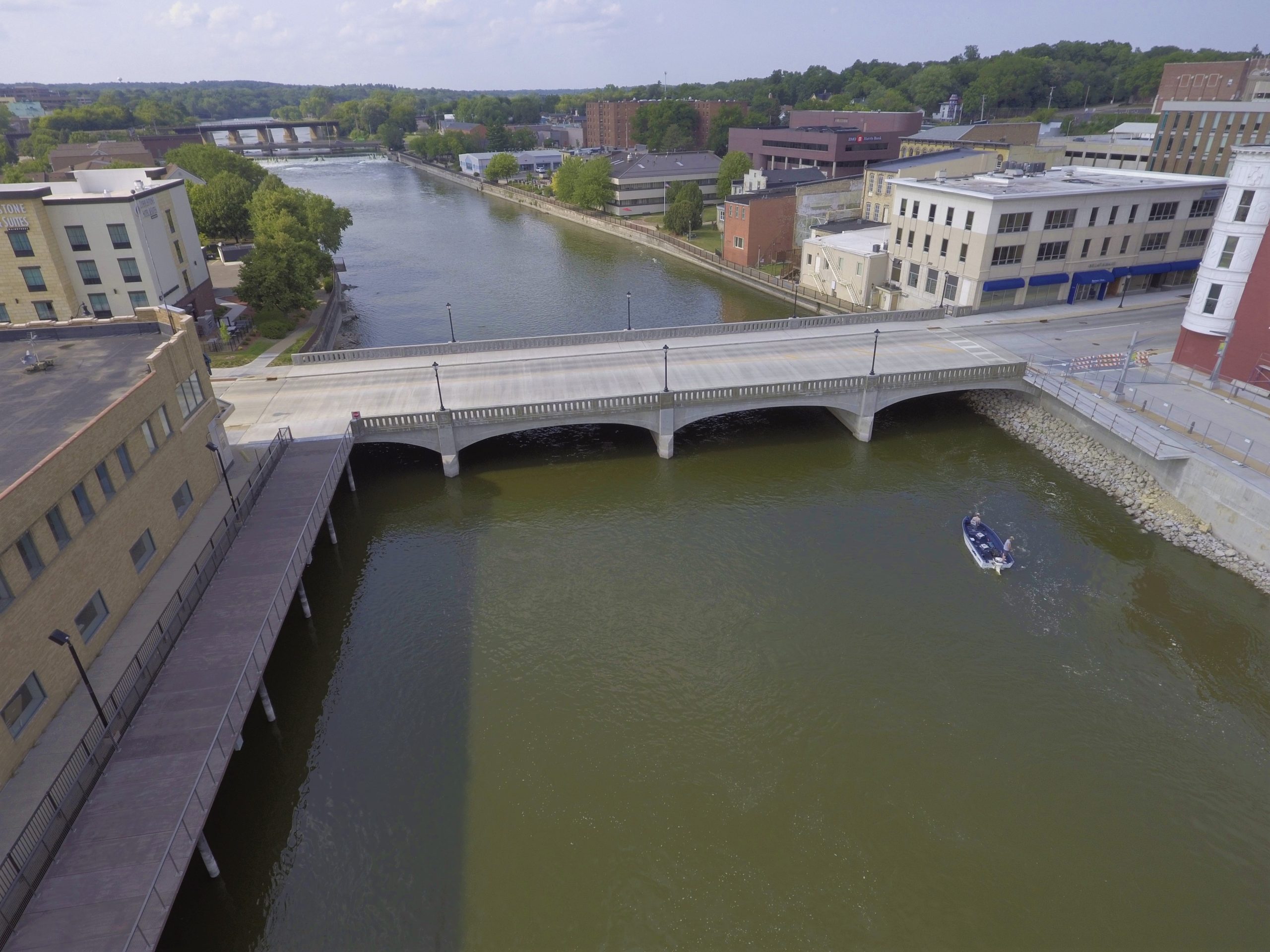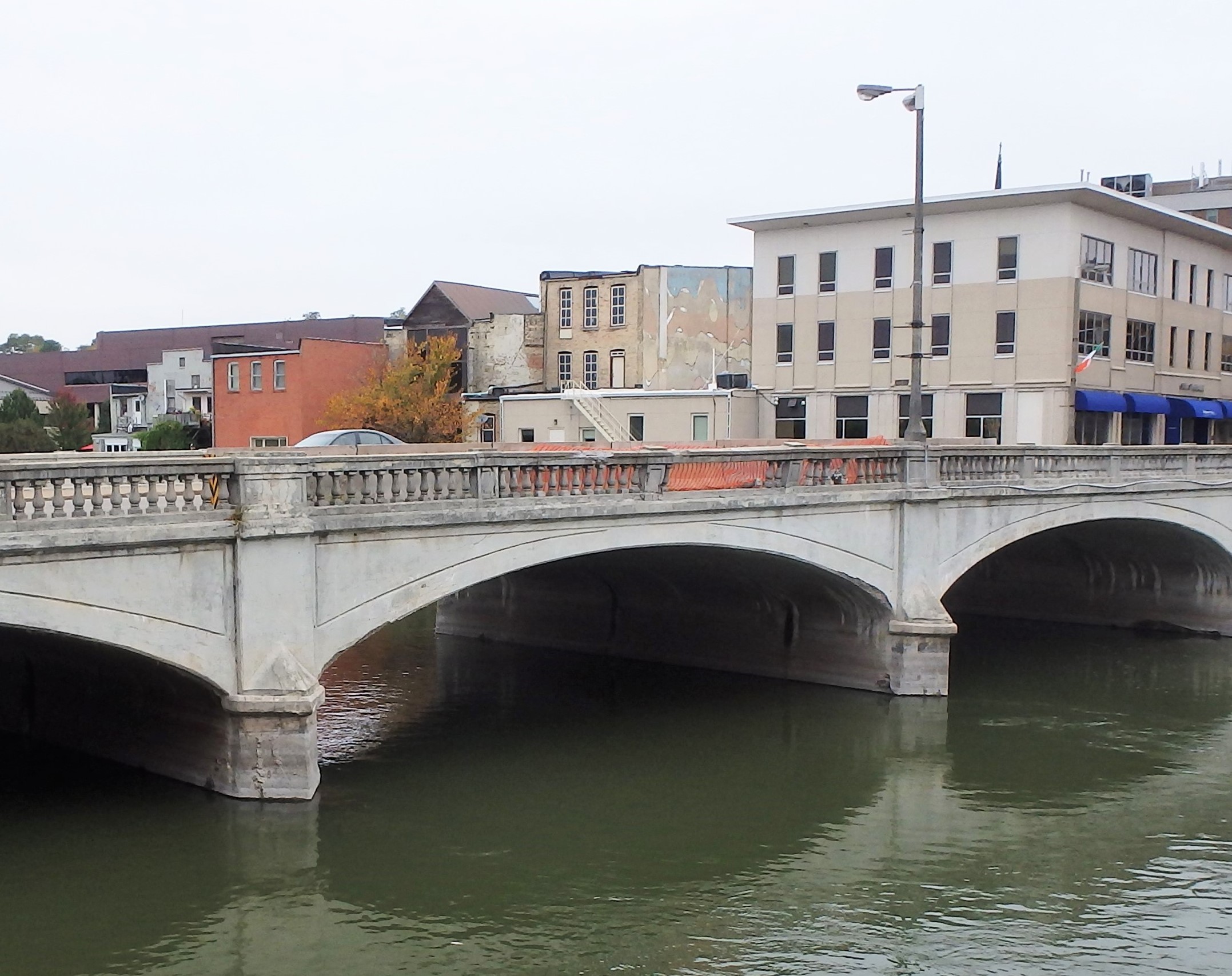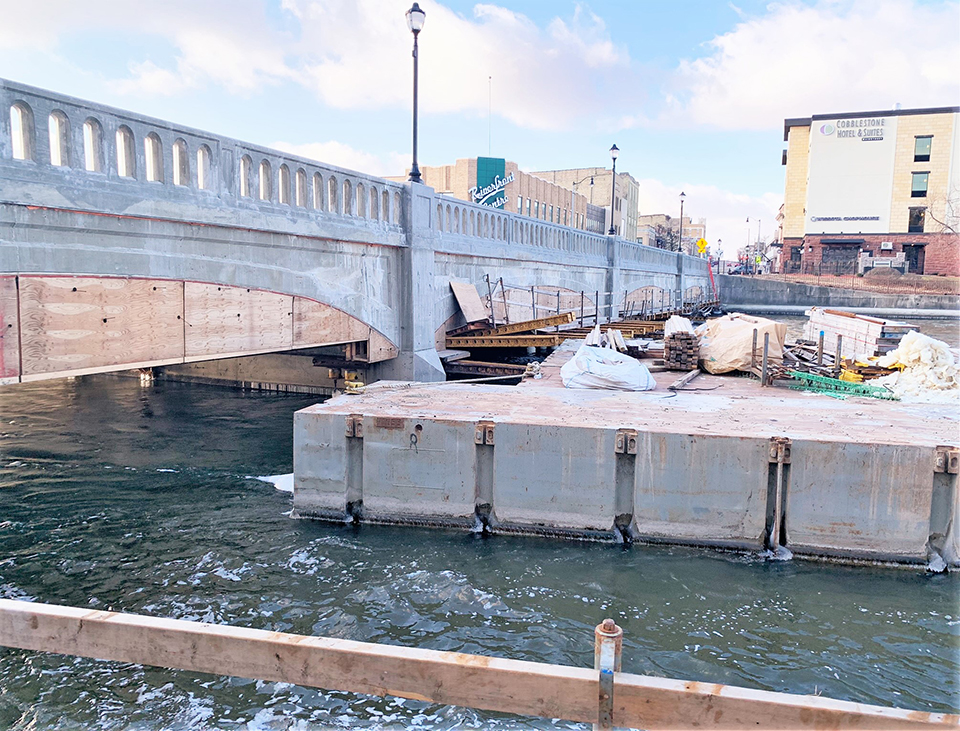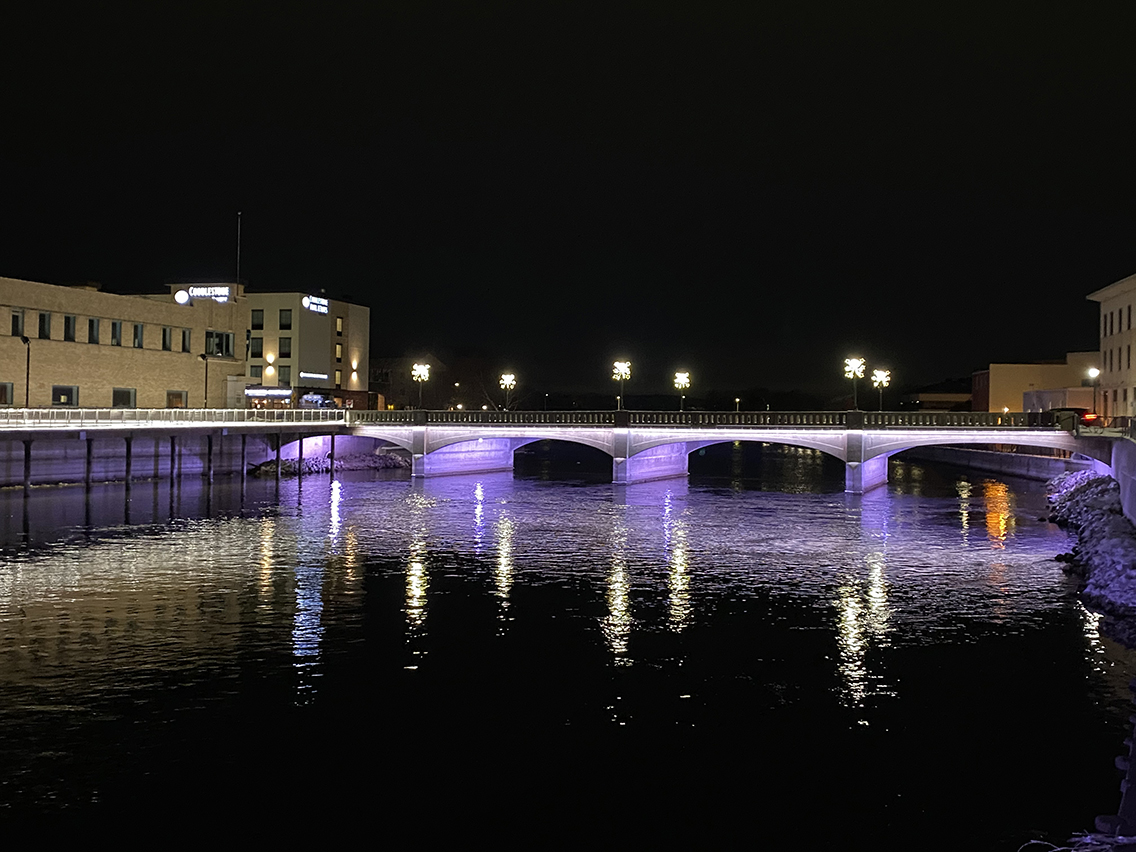The West Milwaukee Street Bridge over the Rock River in the City of Janesville, Wisconsin, is part of a long and cherished local history. Built in 1913 and showing every bit of its age, the City recognized it was time for a replacement, and in 2016, hired MSA for the challenge.

The bridge had deteriorated to such a point that chunks of the concrete bridge railings and arches were breaking loose and falling into the river below, a popular destination for water recreationists as part of the Rock River Water Trail. At the bridge surface were signs of deep asphalt cracking, exposed sidewalk reinforcement, spalling, and a number of balusters that had broken off completely. In addition, the railings were not crash tested, thus not providing the intended safety component of a bridge railing if struck by a vehicle.

Deteriorating former bridge
MSA’s task was to design a new bridge structure to maximize safety, endure the fluctuating nature of the Rock River, withstand seasons of high water, and pay homage to the arch aesthetic of the original bridge design. As the project site was located within the busy downtown district, construction needed to occur amid tight urban constraints, over precious waters and in protection of recognized historic districts, while also tying into existing and forthcoming community infrastructure and popular trail networks such as the Ice Age National Scenic Trail.
The construction process was unique and challenging. Generally, for bridge reconstruction projects such as this, a causeway — or temporary raised tract of fill or rock — is installed to allow machinery and materials quick, easy access to the project components located within the waterway. In this instance, all materials were floated in on barges. This was done in collaboration with the Wisconsin DNR to best protect the river and its ecosystem. In addition, each of the four quadrants along the riverbank at the project site are busy. The MSA team’s design needed to accommodate and coordinate with the construction of a new hotel, and amid ongoing design and construction of the City’s multi-phase ARISE Plan, which was working to add a new pedestrian bridge, riverbank pavilions, walkways and connectors — some of which had already been built, some that had not. The project also needed to be designed to connect to an existing cantilevered sidewalk as well as a lower-level riverwalk trail, with appropriate ADA-compliant junctions that would tie into the bridge deck, new road resurfacing, sidewalk and crosswalks.

Barges hauling materials and equipment
The new West Milwaukee Street Bridge achieves this all. The original 1913 bridge was a four-span, spandrel, sand-filled arch structure with three piers located in the Rock River. MSA chose to aesthetically mirror the original style and designed a four-span, concrete haunched slab bridge with decorative arch-shaped façade beams to maintain the historic look and feel of the structure. The new bridge was widened, adding new, 11-foot travel lanes, 2-foot curbs and 10-foot sidewalks to better accommodate pedestrians and bicyclists. It was also slightly lowered to better align with road and trail approaches and to match the installation of new, ADA-compliant access points.
The MSA team employed a comprehensive communication and public engagement plan to ensure consistent, open lines of communication throughout the project scope and implemented a thorough traffic, pedestrian and trail detour plan to minimize disruptions to businesses and visitors traveling through the busy downtown district — whether by foot, bicycle or boat.
The resulting West Milwaukee Street Bridge is something that founding father Henry F. Janes and his new-found community of Janesville would have been proud of. Structurally sound, sophisticated and classic, this new bridge connects the residents of Janesville to the past and stands as a symbol for a resilient and successful future.

This project was selected to receive a Public Works Project of the Year Award in the Small Cities/Rural Communities category by the Wisconsin Chapter of the American Public Works Association. Winners were announced April 30, 2021, during the opening session of the 2021 Virtual Spring Conference.
